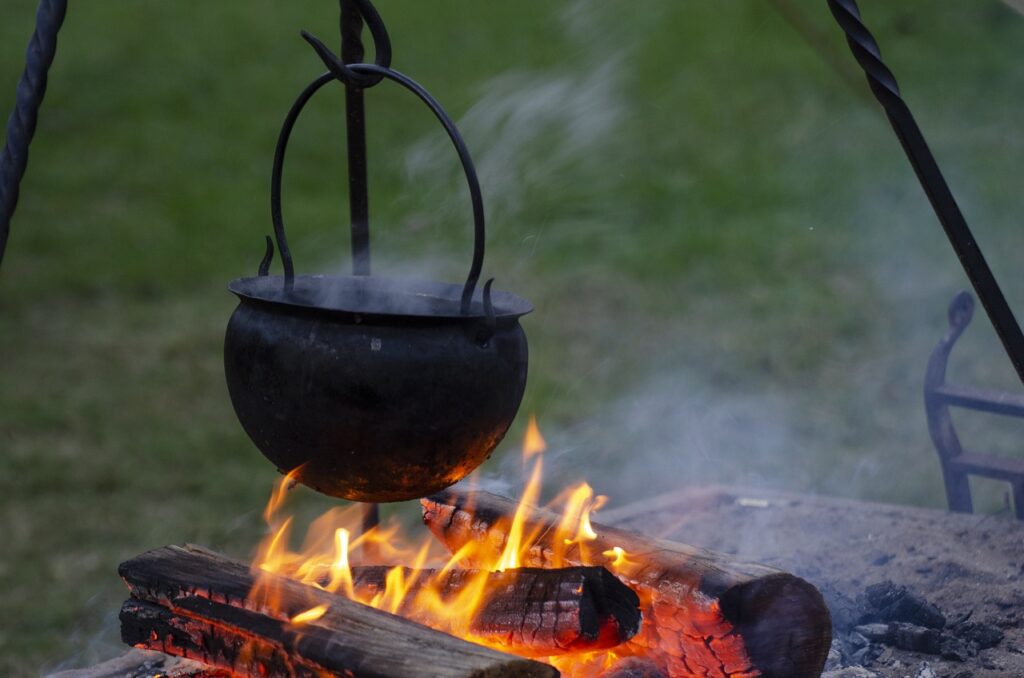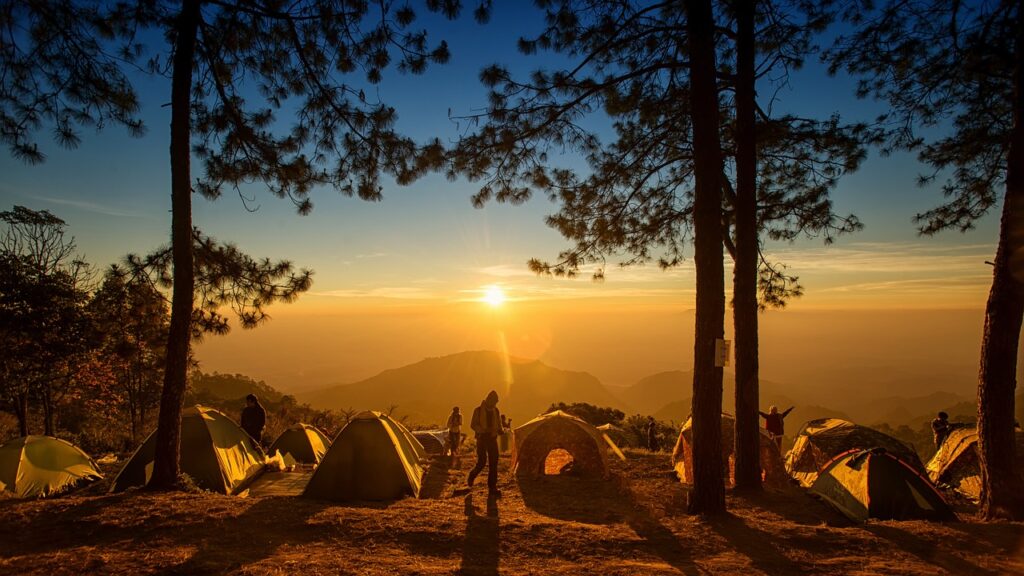Table of Contents
When you hear about parks in America, Yellowstone National Park is perhaps the first thing that comes to mind. Many non-Americans even know this attraction by name despite having never visited it.
Yellowstone National Park is the first national park in the United States and is also known to be the first national park in the world. The park has numerous attractions, including Old Faithful, perhaps the most well-known geyser in the world.

Here are some things that you should know about this breathtaking tourist spot as well as some reasons why you should make a trip to Yellowstone National Park a part of your travel bucket list.
History of Yellowstone National Park
The Park is named after the Yellowstone River, originally named Roche Jaune by the French during the 18th century, It was also earlier called Mi tsi a-da zi which translates literally to “Yellow Stone River”.
It was believed that the name “Yellow Stone” was because of the yellow rocks found near the Yellowstone Grand Canyon. This, however, remains unverified and the real reason is lost through time. There have been records of human settlers in the area since at least 11,000 years ago. Native Americans used the location as a source of food, primarily fish, elk, and other animals.
During the 1800s, Native American tribes such as the Shoshone, Crow, and Blackfoot tribes have been known to describe the location. Some have even described it as a place of “fire and brimstone”, giving the place its mythical reputation during the early years.
The first formal exploration of the area took place in 1869. It was during this time that many locations and sites of interest were charted and numerous flora and fauna were collected and described.
Two years later, a larger expedition was organized and steps were made to recognize the area as Yellowstone National Park under the presidency of Ulysses P. Grant.
Geology of Yellowstone National Park
Yellowstone National Park covers three US states, with the majority of the land mass located in Wyoming with small percentages found in Montana and Idaho.
The park has a total area of 3,468 square miles, with 95 percent being land and the remaining covered by bodies of water, the largest of which is Yellowstone Lake which can be found 2,357 miles above sea level.
The Park itself has an average elevation of 8,000 feet, and it is surrounded by the Rocky Mountains on almost all sides. Eagle Peak is the highest part of the park, standing at over 11,000 feet asl.
Yellowstone National Park’s most distinguishable feature is its volcanism, resulting in the formation of numerous calderas, geysers, hot springs, and other geothermal areas in the region. The most popular points of interest within Yellowstone National Park that best symbolize its unique properties include the Yellowstone Caldera, considered to be the largest volcanic system in Northern America.
Numerous volcanic eruptions have been recorded in the region, with some of the most violent ones occurring at 2.1 million, 1.3 million, and as early as 640,000 years ago.
These events resulted in the formation of multiple calderas in the park, as well as the prevalence of petrified forests in the area.
Yellowstone National Park is also the location of numerous geysers, including Old Faithful. This particular geyser is known for its periodic eruption of boiling water, reaching heights of almost 200 feet and lasting anywhere from 90 seconds to 5 minutes.
The park is also home to the Grand Geyser, the tallest predictable geyser in the world, as well as the Giant Geyser, the most voluminous geyser in the world.
Based on the latest records, Yellowstone National Park is home to over 10,000 geothermal features, including geysers.
Other features include hot springs, fumaroles, mudpots, as well as geothermal gases rising from the ground, some of which can be toxic to humans and animals alike.
Due to its location, Yellowstone National Park is also prone to earthquakes. It has been reported that the area experiences thousands of small-scale earthquakes in a year, many of which are detectable only through instrumentation.
The strongest earthquake record in Yellowstone National Park in recent history occurred in 1959. It measured 7.2 on the Richter scale and caused 28 fatalities, some property damage, as well as the formation of a new lake, aptly called Earthquake Lake.

Wildlife Found in Yellowstone National Park
A vast majority of Yellowstone National Park’s total land area comprises forests, with the remaining is considered as grassland.
The temperate climate of the park, in cooperation with conservation methods, makes Yellowstone National Park a great place for wildlife to live and thrive.
The location is home to numerous animals and plant life and is considered one of the best examples of a nearly intact ecosystem on Earth.
There are over a thousand different plant species and nearly 400 animal species, including around 300 birds and 67 mammal species, that can be found in the park.
For flora, the most common that can be found is the Lodgepole pine which covers 80% of the total forest area. Eight other conifer trees can be found, as well as other plant species such as aspens, willows, cottonwood, sagebrush, juniper, and many more.
There are also endemic species that can only be found in Yellowstone National Park, as well as a few hundred non-native plants that are regularly removed by park management due to their negative impact on native plant life.
In addition, Yellowstone National Park is also home to several types of microbes and bacteria, most of which thrive on the geothermal nature of the waters found in the park.
Many of these organisms are retrieved and studied by scientists for potential medical benefits or other purposes.
As for animal life, several different species make Yellowstone National Park their home. The park is also home to the largest bison herd in the world with the population peaking at almost 5,000 individuals in 2005.
Other animals that you may find in Yellowstone National Park include elk, moose, deer, cougars, black and grizzly bears, Rocky Mountain wolves, coyotes, mountain goats, and many more.
As for non-mammalian creatures, animals such as ospreys, cutthroat trouts, tiger salamanders, bullsnakes, rattlesnakes, painted turtles, peregrine falcons, and various types of frogs can be seen in the park.
A few pairs of bad eagles as well as some members of the extremely endangered whooping crane species have also been seen nesting or living in or around Yellowstone National Park.
Different factors such as illegal hunting and fishing, forest fires, disease, climate change, and the introduction of invasive species have caused fluctuations in the population of flora and fauna within the park.
However, conservation efforts have managed to keep the population of individual species from dropping significantly, helping these animals and plants remain mainstays within the park grounds.
Climate
Yellowstone National Park has been characterized as having a humid sub-arctic continental climate. However, the general climate of the park is very unpredictable, especially with the location being so high above sea level.
Daytime temperatures during the summer average at around 70 to 80 degrees but have reached as high as 99 degrees during record heatwaves.
The park does not experience extreme cases of drought, though, and rain is still pretty common even throughout the summer months.
However, nighttime temperatures can reach below-freezing temperatures at higher altitudes. There may also be some thunderstorms during the summer months, especially in the afternoon.
For spring and fall, temperatures can range between 60 degrees to below freezing, especially at night. During the winter season, the park is covered in snow with below-freezing temperatures.
Average rainfall varies and can reach as high as 80 inches annually. Snow, on the other hand, falls annually with averages of 150 inches. Snow can appear at the park at any time of the year, though, especially at higher altitudes.
What Can You Do at Yellowstone National Park?
There are various activities that guests can do at Yellowstone National Park. The variety of activities will depend on the current season and time of visit throughout the year.
During the winter seasons, activities include skiing, snowmobiling, and snowcoach tours. During warmer weather, hiking, camping, backpacking, horseback riding, and boating are popular activities.
Fishing season in Yellowstone National Park is from Memorial Day weekend to the first Sunday of November. However, only those with a fishing license are allowed to do so.
There are also guided trips and other events organized by the park for visitors to participate in and enjoy.
Of course, the main attraction of Yellowstone National Park is its animal inhabitants. Visitors can view grizzly bears emerging from their dens after the hibernation months, or bird migrations during the winter and spring seasons.
They can also visit Old Faithful and other points of interest that highlight the natural wonders of the park.
Visitors should always take note, though, of advisories such as extreme weather patterns like flooding, tornadoes, high levels of snowfall, risks of landslides, or other warnings.
They should also take note of the rules and regulations of the park such as illegal hunting and not feeding the bears.
Conclusion
Yellowstone National Park is a great place that captures the beauty and wonder of the world. It is a tourist attraction that is worth visiting and is even more worth preserving for future generations.
There are a lot of activities to be done within the park and many sights to see, but guests should plan their trip accordingly and should always come prepared especially when it comes to clothing and other additional gear.
Yellowstone National Park is the best place to go to for animal and nature lovers. It is also the perfect spot to appreciate the spectacle of Mother Nature at its finest.